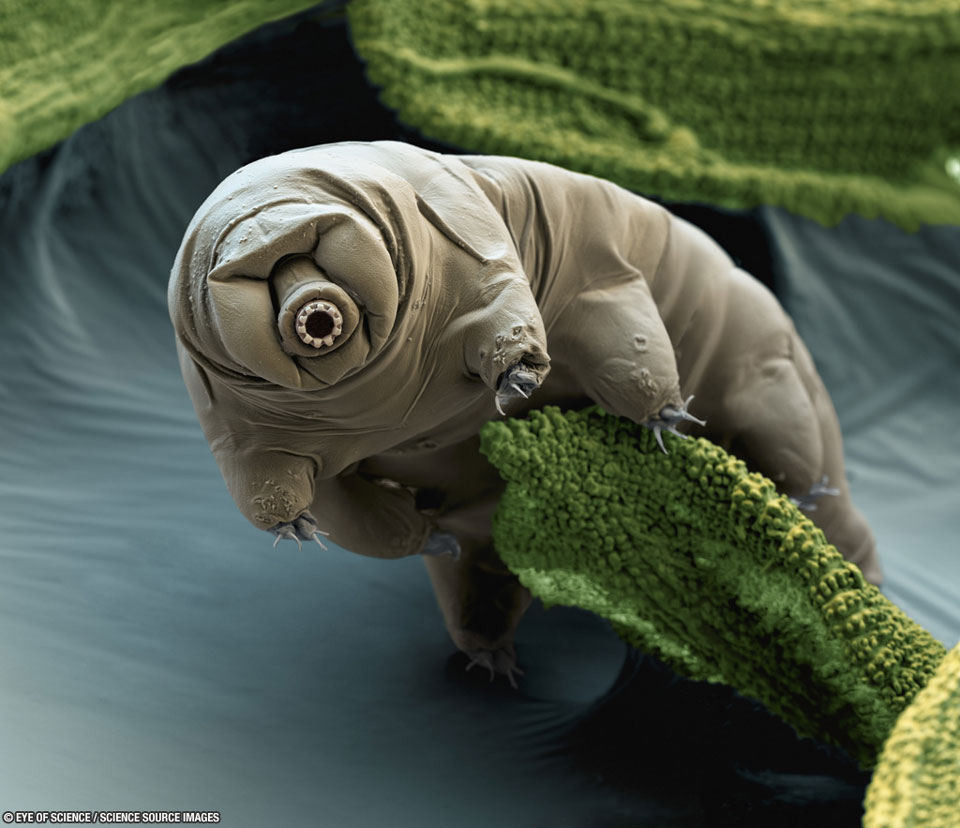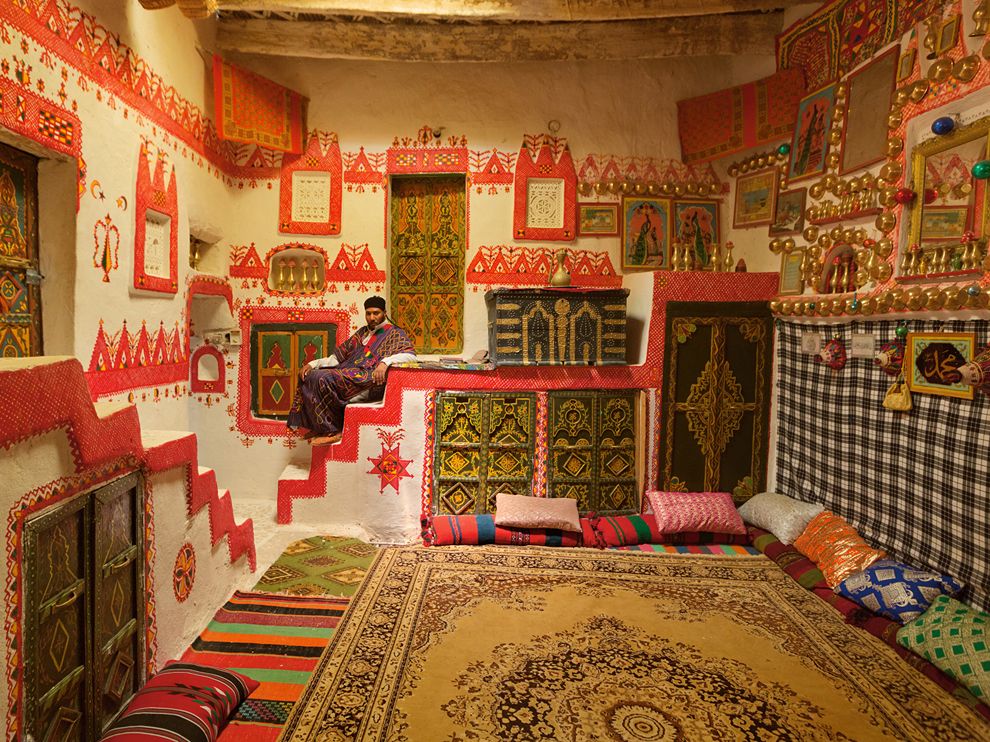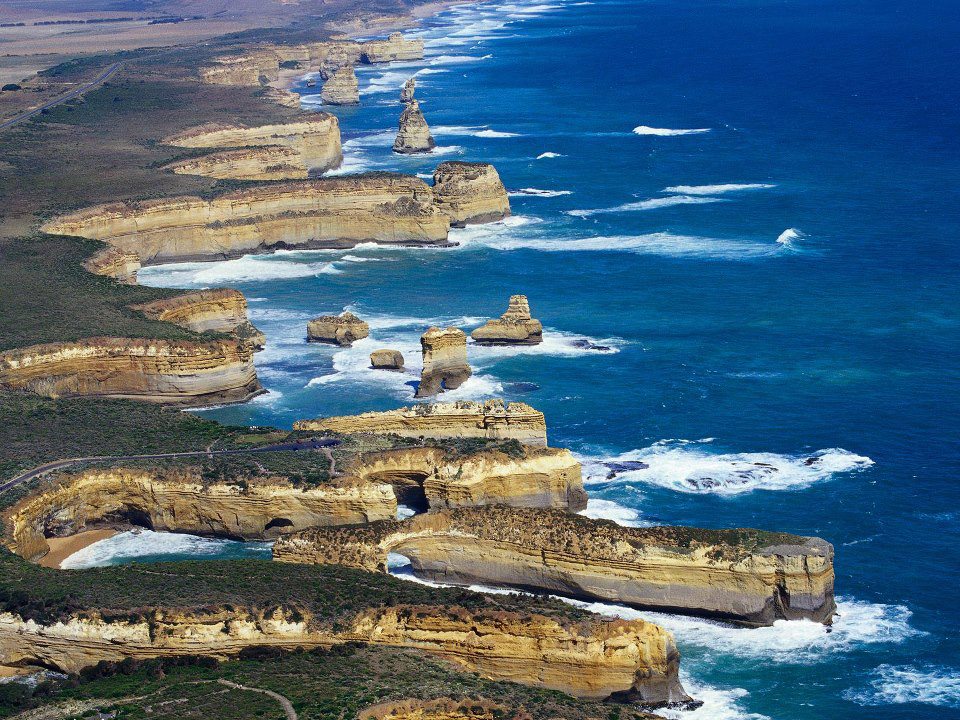
Lake Quilotoa is a water-filled caldera and
the western most volcano in the Ecuadorian Andes. The crater is about 2
miles wide and the lake is about 820 feet deep. It is tinted green by
dissolved minerals. Photo #1 by Kevin Labianco

Deepest crater lake in the Uintas Mountains of Utah. Photo #2 by Cordell Mandersen

Lake Pinatubo, Philippines, formed after the
1991 eruption of Mount Pinatubo has filled with water from monsoon
rains. At 800 m (2,600 ft), it is the deepest lake in the Philippines. Photo #3 by monggoy

Lake Pinatubo is not the only such lake in the Philippines. This is the Crater Lake at the Mouth of Taal Volcano in Luzon. Photo #4 by Deck Chua

The Okama Crater Lake at Mount Zaō, Japan. According to Wikipedia,
it is “also known as the ‘Five Color Pond’ because it changes color
depending on the weather.” It “lies in a crater formed by a volcanic
eruption in the 1720s. The lake is 360 meters (1,200 ft) in diameter and
60 m (200 ft) deep, and is one of the main tourist attractions in the
area.” Photo #5 by Laurenz Bobke

Lake Marjorie, Kings Canyon National Park.
The photographer wrote, “Lakes in the High Sierra come in a number of
colors. Lake Marjorie, at 11,132′ has an aquamarine ‘swimming pool’
tint. Crater Mountain dominates the skyline, with Pinchot Pass to the
south. I was happy to see clouds at dawn, but by noon a fast moving
storm was spitting hail, thunder, and lightning as we cleared Mather
Pass. Damn, this spot is gorgeous.” Photo #6 by Steve Dunleavy

‘An Infernal Bath’, New Zealand, Waimangu Volcanic Valley, Inferno Crater Lake. Photo #7 by Christopher Schoenbohm

154 square miles (400 sq kms) of volcanic
area called Devil’s Slope, Argentina, is home to the world’s largest
crater field. The Bajada del Diablo field is pocked with at least 100
depressions left by meteorite or comet collisions about 130,000 to
780,000 years ago. After capturing this image of a crater lake there,
the photographer wrote, “The Celestial Equator: At the Celestial equator
the stars are almost at the same distance from both celestial poles so
they seem to travel in a straight line. The South Celestial pole is
towards the top left of the photo. The North Celestial pole is below the
horizon towards the bottom-right.” Photo #8 by Luis Argerich

Iceland, Klausturhólar- Kerið, a volcanic crater lake in the southwestern part of Iceland, “is
approximately 55 m (180 ft) deep, 170 m (560 ft) wide, and 270 m (890
ft) across. Kerið’s caldera is one of the three most recognizable
volcanic craters because at approximately 3,000 years old, it is only
half the age of most of the surrounding volcanic features. While most of
the crater is steep-walled with little vegetation, one wall is sloped
more gently and blanketed with a deep moss, and can be descended fairly
easily. The lake itself is fairly shallow (7–14 metres, depending on
rainfall and other factors), but due to minerals from the soil, is an
opaque and strikingly vivid aquamarine.” Photo #9 by Progresschrome

Also in Iceland is Ljótipollur,
Landmannalaugar. “The Ljótipollur is an explosion crater in Iceland in
the Landmannalaugar area. Ljótipollur means something like Ugly
modderpot, but it has really nice red colored walls and is filled with
greenish water that contains many trout. A short side road from the
intersection of the Fjallabaksleið and Landmannaleið leads to the top.” Photo #10 by µµ

Whakaari/White Island Crater Lake in New Zealand. Photo #11 by x-oph

Top: Crater Lake National Park, Oregon, panorama. Bottom: Crater lake, Wizard Island. Photo #12 by Curtis Perry & #13 by Tim Hamilton

Lago Biao. “Wow. It was worth the 2+ hour
uphill hike to this crater lake, which is at about 2000m elevation and
situated in the southern half of the island of Bioko.” Photo #14 by John and Melanie (Illingworth) Kotsopoulos

Lonar Crater Lake at Aurangabad, India. Lonar crater lake was formed by a meteor strike about 50,000 years ago. Photo #15 by Akshay Charegaonkar

Kelimutu Colored Lakes – Komodo, Indonesia. Home to Komodo National Park: Where Dragons Still Rule. Photo #16 by whl.travel

Mt. Shirane, crater lake in Japan. Photo #17 by digicacy

La Cumbre volcano, Fernandina Island, Galapagos.
To illustrate how quickly a crater lake can change, this was
photographed by astronauts aboard the International Space Station in
2002. But this crater lake has returned to its explosive beginnings.
Wikipedia stated that it began erupting again in April 2009. It’s now the most active volcano of the Galapagos Islands. Photo #18 by ISS / NASA

Maly Semiachik volcano – crater lake.
Kamchatka Peninsula, Far East Russia. “Pale blue water fills the lake.
The color may be due to fine silica particles.” Russia has several
crater lakes, including two that are artificial since they were created
by atomic testing. Photo #19 by MOBmole

Deriba Crater Lake at Jebel Marra – Darfur, Sudan. “The 5-kilometer-wide Deriba Caldera
was formed by explosive eruption of the Jebel Marra Volcano
approximately 3,500 years ago. The volcano is considered dormant, rather
than extinct, as hot springs and fumaroles (gas and steam vents) are
still present.” Photo #20 by J Williams

The Hnausapollur Bláhylur lake in a deep, volcanic crater. Fjallabak Nature Reserve, Iceland. Photo #21 by Michał Sacharewicz

“After 3 hours of painstaking clambering up
loose scree, I could see the whole of Lomok a volcanic island. The
triangle shadow on the horizon is the shadow of Rinjani herself at
sunrise. To the right of the shadow on the horizon is Bali again (very
small). In the middle of the crater (which measures 20Km across) is the
newer Gunug Baru on the lake (Danau Segara Anak),” wrote the
photographer. Photo #22 by NeilsPhotography

Rano Kau is a crater lake which is on mysterious and hauntingly beautiful Easter Island. This lake is one of only three natural bodies of fresh water on the island. Photo #23 by Eduardo Llanquileo

Askja, Iceland. View of Viti and Öskjuvatn. Photo #24 by Lev Glick

Lake Toba, North Sumatra, World’s Largest Caldera Lake & the Site of the Toba Supervolcano that created the Ice Age. It is “the largest lake in Indonesia and the largest volcanic lake in the world.” Photo #25 by Desktop Nexus

In Indonesia, Lake Segara Anak, Mount Rinjani, Lombok. Photo #26 by Thorsten Peters

Out of this World: “I took this picture
inside the crater of the Ijen komplex. I spent nearly the whole night in
this unreal and beautiful place to shoot timelapse sequences for my new
short,” noted the photographer. Photo #27 by Dennis Stauffer

View of the Tengger caldera crater from Penanjakan. Photo #28 by NeilsPhotography

Laguna Cuicocha in Ecuador. The photographer
explained, “Cuicocha is a three kilometre (1.9-mile) wide caldera and
crater lake at the foot of Cotacachi Volcano in the Cordillera
Occidental of the Ecuadorian Andes. Its name comes from the Kichwa
Indigenous language and signifies: “Lago del Cuye” or Guinea Pig Laguna
in English. It was given this name due to the shape of the largest
Island located in the middle of the Laguna resembling a Guinea Pig.” Photo #29 by Kevin Labianco

Laguna de Guatavita in Columbia is a crater lake that no one knows for sure how it was formed. “It is
a circular lake in the mountains in what appears to be a meteor crater.
However, the origins of the crater are unclear.” The lake is steeped in
legends and myths, including that “a ritual conducted there is widely
thought to be the basis for the legend of El Dorado.” Photo #30 by See Columbia

Two crater lakes on Ambae island, Vanuatu, 3D image acquired by the Shuttle Radar Topography Mission aboard Endeavour Shuttle. Photo #31 by NASA/JPL/NGA

Blue Lake, Mount Gambier, Australia. Photo #32 by Mike Lehmann

Crater Lake at Irazu Volcano in Costa Rica. Photo #33 by Rafael Golan

Kasatochi Island crater lake in Alaska
as seen prior to the eruption of August 7, 2008. Yet another example of
how a beautiful crater lake that began with mass devastation and
violence and seem peaceful, safe and lovely before the geology changes
and it returns to the earth’s cycle of violence. Photo #34 by Brie Drummond

Lake Maninjau’ is a crater lake in West Sumatra, Indonesia. Photo #35 by Indi and Rani Soemardjan

Katmai Crater on Mount Katmai, Alaska. Photo #36 by Captain Budd Christman, NOAA Corps

Winter Evening at Mount Ruapehu’s Crater Lake, Tongariro National Park, New Zealand. Photo #37 by myheimu

Heaven Lake, a crater lake at Tianchi at the border of China and North Korea. Photo #38 by Globe Images

Arctic Volcanic Crater Lake. Photo #39 by High Definition Wallpapers

The Pingualuit Crater is an impact crater filled with water. Photo #40 by Denis Sarrazin / NASA / Earth Observatory

Lake Bullen Merri is a brackish crater lake near Camperdown in Victoria, Australia. Photo #41 by AJG061

Niuafoʻou Island, Tonga, from space. Photo #42 by NASA / ISS

A U.S. Air Force McDonnell F-4D-25-MC Phantom
II fighter (s/n 64-0956, c/n 1383) form the 119th Fighter Wing The
Happy Hooligans, North Dakota Air National Guard, flies over Crater
Lake, Oregon (USA). The gorgeous crater lake remains, but the aircraft
has since been retired. USAF Photo #43 by Larry Harrington

Small bodies of water inside a huge crater as
seen in this aerial view of Aogashima, a volcanic Japanese island. In
time, who knows? This entire island may eventually fill with water and
become a crater lake. Photo #44 by imgur via Wikipedia




















